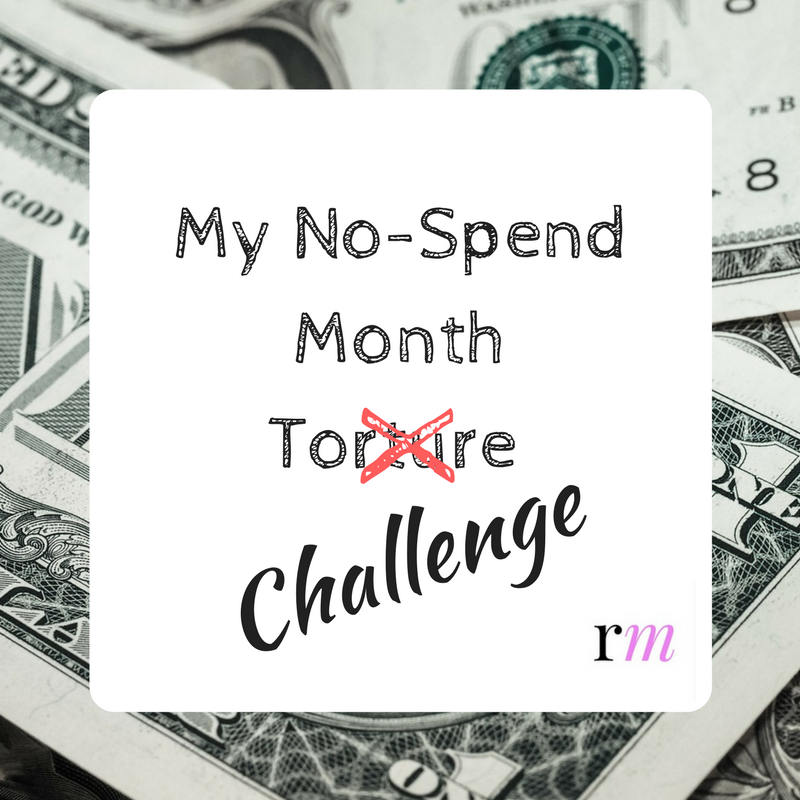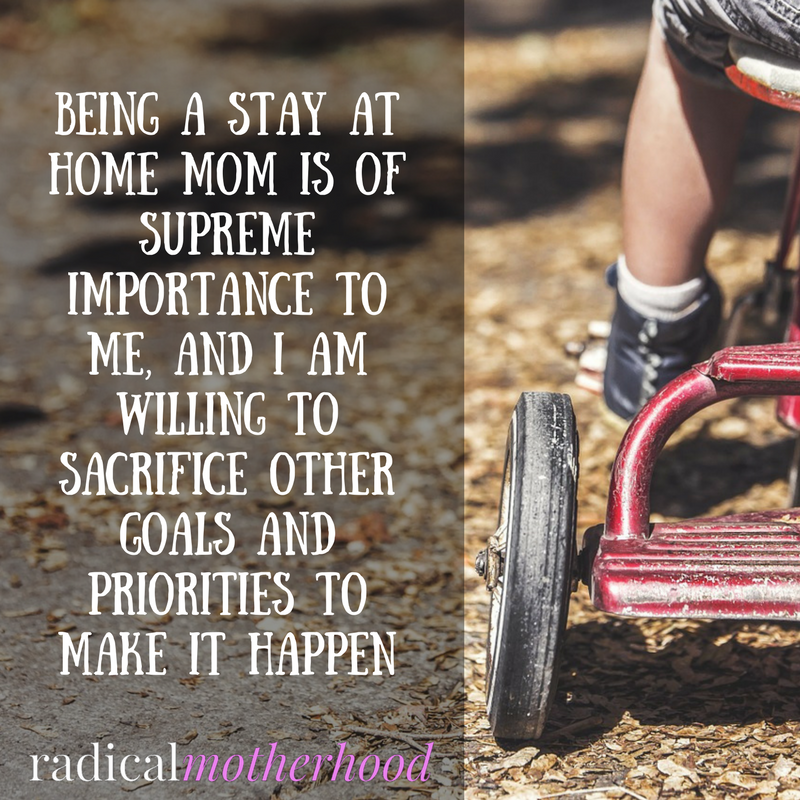No Spend = No Like
Em and I were so excited when we heard about the “No Spend Month Challenge.” (For the record, it was her idea.) If you do a search on Google or Pinterest, you’ll find all kinds of advice on how to do one, how not to do one, and how to prepare to do one. Basically, you challenge yourself not to spend anything except what’s absolutely necessary for an entire month.
No clothes. No craft supplies. No camping trips or movies. No turtle sundaes.
I think the point is to make you more aware of your spending habits and help you identify areas in which you tend to overspend. I say, “I think” because by the time the second week rolled around, it felt like the only point was to torture myself and my family, or maybe to just delay a bunch of important – but not “necessary” – expenses until the next month. I found myself not so much deciding not to buy things, but simply deciding to wait to buy them until after the month ended, which I don’t think is really in keeping with the spirit of the challenge. But am I not ever going to buy school supplies? Or school clothes? Or a car seat for the new baby? Maybe I needed a more liberal definition of “necessity.” And maybe, with a budget as tight as ours is anyway, a “no-spend month” wasn’t as effective as it would be for a family with more disposable income. I missed the few splurges we usually make ($2 movie night with the boys, thrift store trips for 50-cent toys with the little kids). I was also pretty resentful of the fact that it was July, one of the best camping months of the year, and we weren’t going to be able to camp because of the challenge. (So I cheated, stole from our grocery budget, and went anyway.)
I do think that a no-spend weekend, or even a no-spend week, has its place. Maybe even a month, if circumstances are dire. Our culture is so saturated with advertising and the pressure to consume that you reaIly do start to lose perspective on what’s a want versus an actual need.
When to Try a No-Spend Challenge
I would recommend trying a no-spend challenge if you’re in one of the following situations:
- You’re struggling to make ends meet and/or pay off your debts. The challenge is a good way to temporarily cut back in order to catch up on bills.
- You want to test the waters and see if you could live on less – or even on one income.
- You’re approaching a month of higher-than-normal expenses (like Christmas).
- You want to get your older children exposed to the concept of budgeting and show them that there’s more to life than earning and spending money.
- You’ve never really tracked your spending and want to identify areas in which you overspend.
- You want to practice and grow in the virtue of temperance.
- You want to implement a monthly budgeting system and need a better idea of where your money is going in order to set your budget categories and amounts.
Creating a Monthly Budget
One part of the challenge that I enjoyed and am going to continue is setting a monthly budget. Years ago, John and I took Dave Ramsey’s Financial Peace University class at our church, and I was familiar with the concept of a zero-based budget and the cash envelope system, although we never actually implemented them. I took this opportunity to give both another try, and it seemed to help. Our food and grocery spending, which is regularly between $1200 and $1500, was only $800 in July, and the main reason was that we were using the cash envelope system. And that my aunt and parents kept buying us meat. In a nutshell, the cash envelope system means withdrawing cash for each category of discretionary spending (like groceries, dining out, entertainment, and gifts), and then spending only that cash on that category until it’s gone. Once the cash is gone, you either stop spending, or you have to take money from another category. When we went camping, since we didn’t have any cash budgeted for camping fees, I had to take the money out of the grocery budget.
The zero-based budget is what you use to allocate all of your income into the cash envelope categories, as well as categories that you’ll pay by automatic debit or check, like rent/mortgage and utility bills. You start with your total projected income for the month, and you budget out every dollar, down to a zero balance.
Our July Budget
Here’s an example based on our July budget. You’ll notice that there is no “Savings” category, which I think we really should have, but there just isn’t room for it at the moment. We do have a 401k, which John contributes to, and a health savings account, but we don’t have a regular monthly plan for setting aside savings. This budget is also missing a lot of the categories that many people will need, like entertainment and restaurants, because we were trying not to spend anything extra this month. If you’re looking for a good budget template, try our Monthly budget PDF, or there’s also one on the Dave Ramsey site.
| Monthly Take-Home Pay (estimate) | $3,550.76 | ||
| Charity | Food | ||
| Tithes (church) | $270 | Groceries | $800 |
| Charity (Women for Women & Iowa Right to Life) |
$85 | Total (22.5%) | $800 |
| Total (10.3%) | $365 | Transportation | |
| Housing | Gas & Oil | $275 | |
| Rent | $500 | Total (7.7%) | $275 |
| Total (14%) | $500 | Medical | |
| Utilities | Doctor Bills | $200 | |
| Electricity | $80 | Total (5.6%) | $200 |
| Gas | $45 | Insurance | |
| Water & Trash | $77 | Life Insurance | $200 |
| Cell Phone | $60 | Total (5.6%) | $200 |
| Internet & Landline | $76 | Personal | |
| Netflix | $10 | Toiletries | $40 |
| Total (9.8%) | $348 | Child Support | $343 |
| Debts | Music/Technology | $106 | |
| Car Payment | $261.11 | Misc. | $112.65 |
| Total (7.4%) | $261.11 | Total (16.9%) | $601.65 |
| Total Expenses | $3,550.76 | ||
We did manage to stick to our budget, although I took money from some categories (like doctor bills, which did not end up being $200) and use it on non-essentials (like the camping trip). As I said earlier, though, I delayed buying several things because of the no-spend challenge and have a feeling that August isn’t going to turn out so well.
Here’s how we did by category (+ means over budget; – means under budget):
| Monthly Take-Home Pay | +$489.40 | ||
| Charity | Food | ||
| Tithes (church) | -$50 | Groceries | +$64.94 |
| Charity | +$96 | Restaurants | +$19.76 |
| Total | +$46 | Total | +$84.70 |
| Housing | Transportation
|
||
| Rent | +$0 | Gas & Oil | -$58.45 |
| Lawn care | +$65 | Total | -$58.45 |
| Total | +$65 | Medical | |
| Utilities | Doctor Bills | -$153 | |
| Electricity | -$1 | Total | -$153 |
| Gas | +$0 | Insurance | |
| Water & Trash | +$8.61 | Life Insurance | -$2.72 |
| Cell Phone | $60 | Total | -$2.72 |
| Internet & Landline | +$9.96 | Personal | |
| Netflix | +$0 | Toiletries | -$40 |
| Total | +$17.57 | Child Support | +$0 |
| Debts | Music/Technology | +$3.10 | |
| Car Payment | +$0 | Misc. | -$78.15 |
| Total | +$0 | Total | -$115.05 |
| Total Over/Under Budget | -$115.95 | ||
How to Start a Monthly Budget
My advice on implementing a zero-based monthly budget is:
- Start by going through all of your bank and credit card statements for the previous month. Figure out where your money goes and what categories you want to include in your budget. Avoid the temptation to leave out certain expenses because they were out-of-the-ordinary, or because you’re embarrassed by how much you spent. Just get it all on paper and try not to be too hard on yourself. This is by far the worst part of the whole process.
- Find or create a budgeting template that works for you. There are many templates available online, including ours.
- When you do your first budget, try to find a balance between being realistic and being frugal. Don’t try to change all of your spending habits in one month. I would focus on one category at a time; any more than that, and you’ll get overwhelmed and be tempted to give up.
- Get your husband involved. Make sure you understand what he’s spending and how he feels about getting a tighter rein on your finances. Try not to be confrontational if you discover that he’s been spending more money than you thought, and don’t automatically assume that your ideas about how to spend your money are best.
- When you do the cash envelopes, don’t withdraw all the cash for the month at once. It’s too much to carry around, and leaving it around the house creates its own set of problems. Do one or two weeks at a time, and be diligent about keeping the cash with you (versus leaving it in the car, which I have been known to do).
- Don’t feel the need to save every single receipt. I found that it’s enough to just review your bank and credit card statements at the end of the month to see how my spending compared to my budget. For cash purchases, you may want to save receipts initially to help identify excess spending, but for me, keeping and looking at receipts was just too overwhelming.
- I’m still trying to figure out what to do about what Dave Ramsey calls “sinking funds” – categories of savings that you build up over a period of several months in order to cover large expenses, like quarterly insurance payments, Christmas presents, or the birth of a baby. I don’t want the cash laying around, but I also don’t trust myself to just earmark a portion of our savings account. For now, I’m not really doing anything, and I’ll probably just take the money out of our savings account when the time comes.
- If you mess up and go over budget, don’t get discouraged. Be strict with yourself, but be forgiving, too.
For more resources on budgeting and frugal living, check out our Budgeting and Saving Money Pinterest board. You might also like our posts on living on one income: Living on One Income I and Living on One Income II.
So, readers, have you ever tried a no-spend challenge? How about a budgeting system? Share your feedback and ideas in the comments!




Comments are closed.